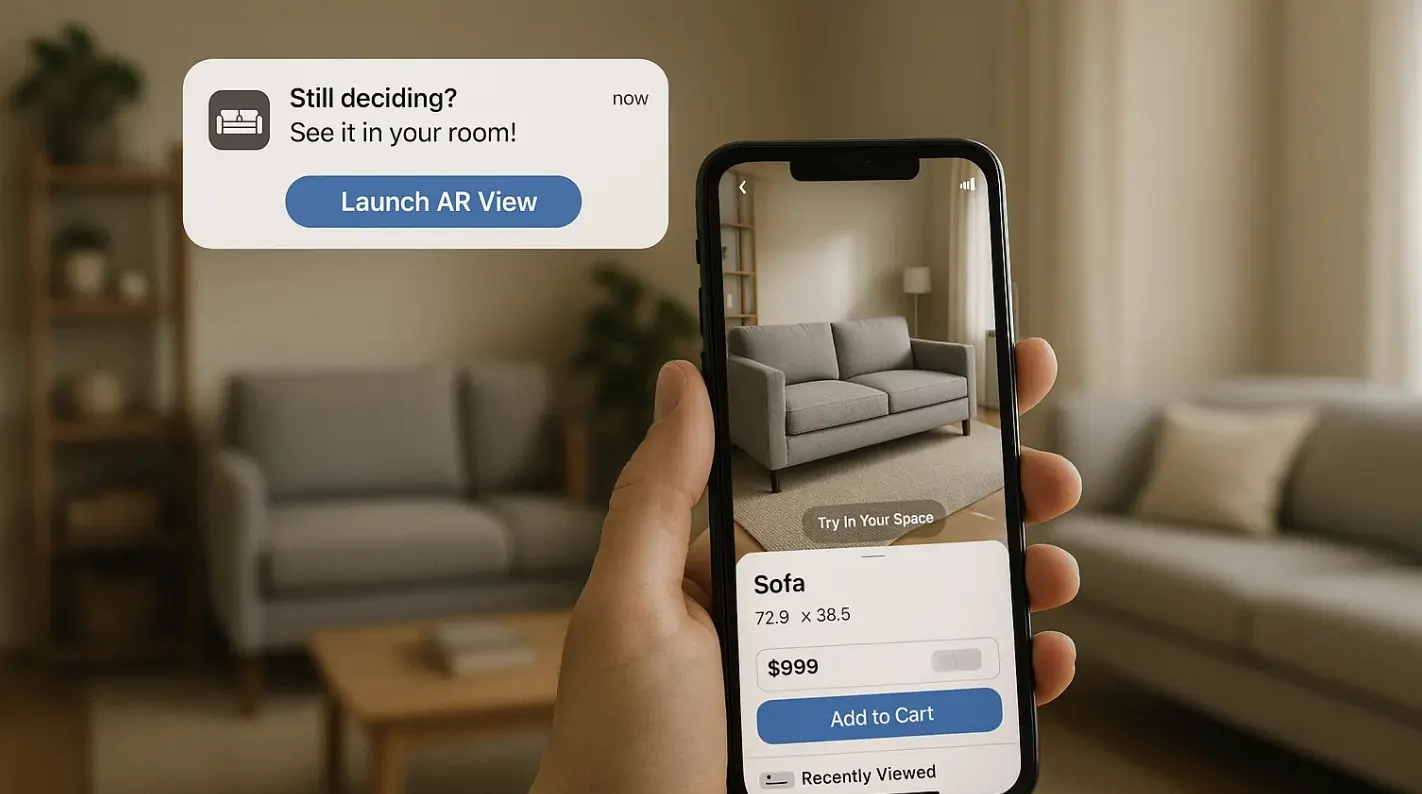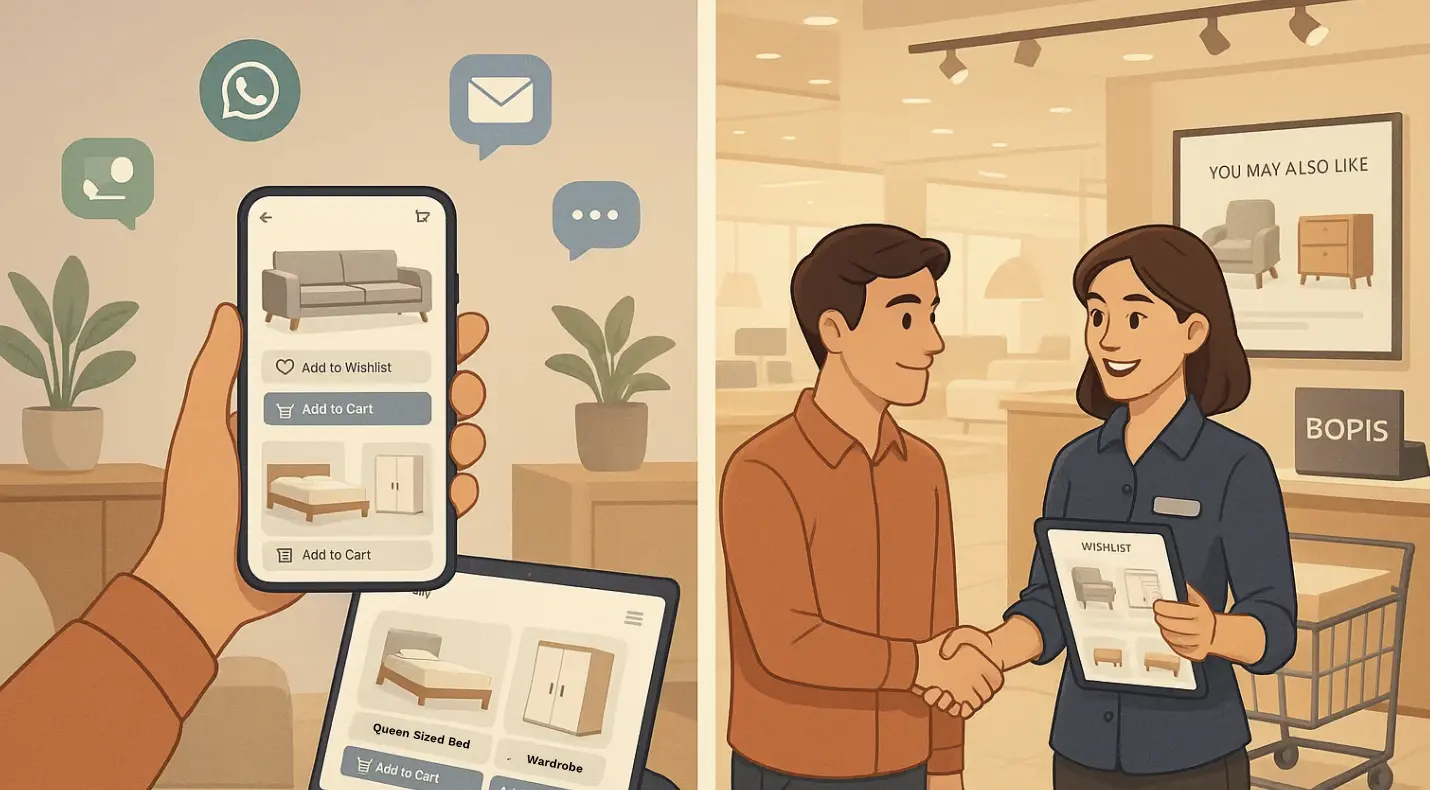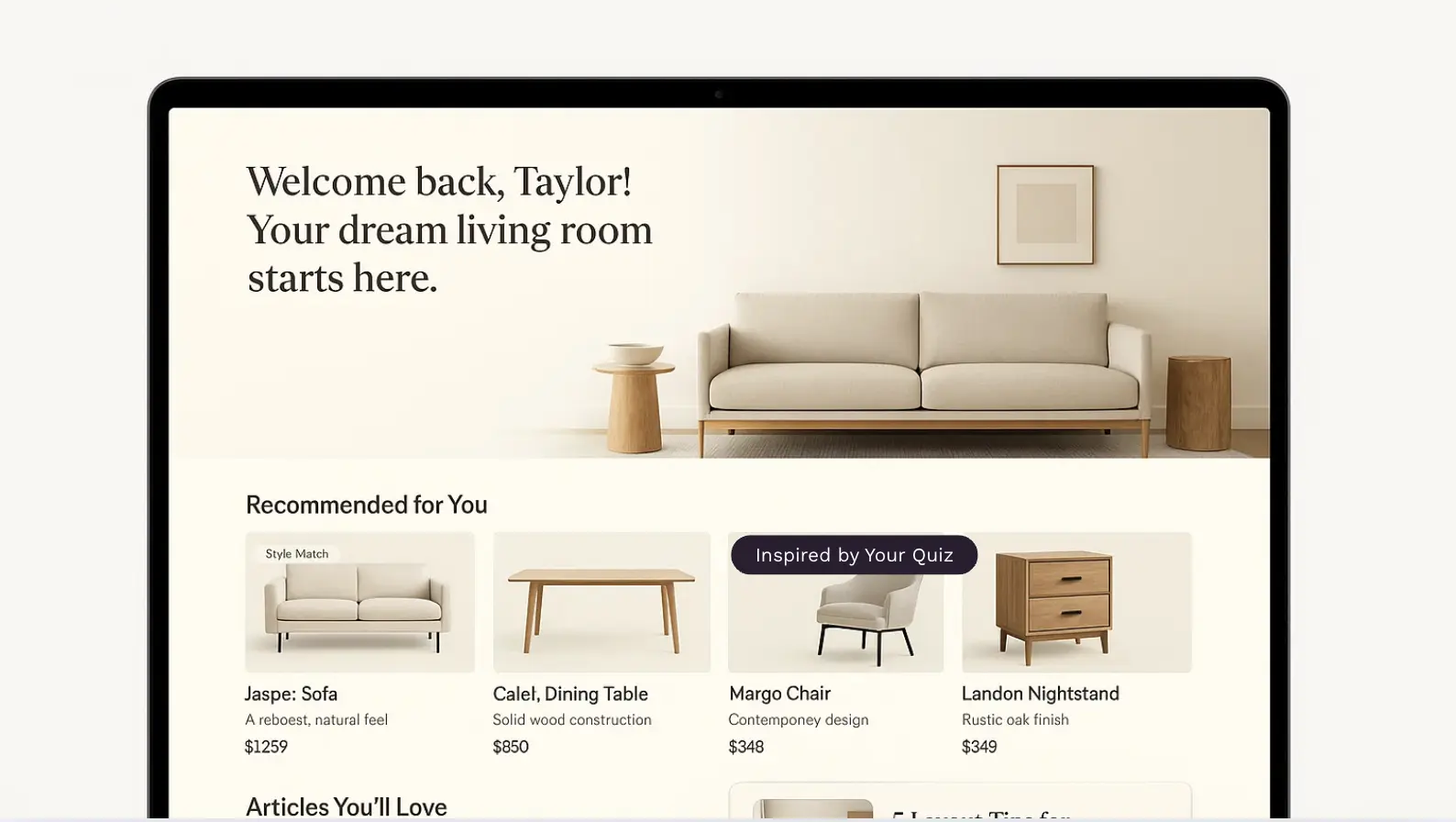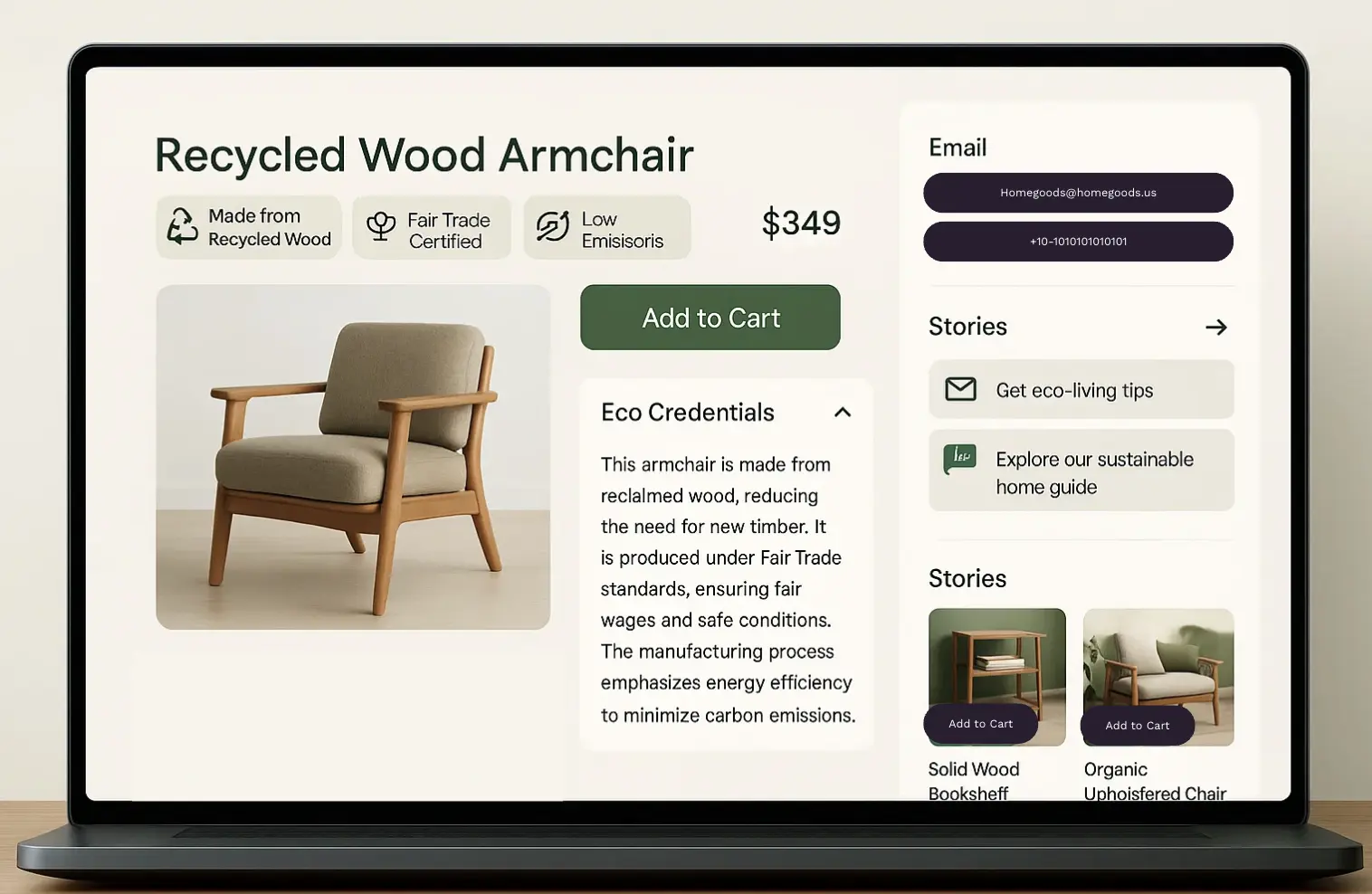Introduction
The global home decor market is not only growing; it’s transforming. Valued at USD 696.85 billion according to Fortune Business Insights, it’s on a trajectory to hit an impressive USD 910.81 billion by 2032. This expansion is fueled by more than just economics; it’s driven by a fundamental shift in how consumers view their living spaces—as extensions of their identity, havens of comfort, and reflections of their values. In this increasingly digital marketplace, generic marketing no longer cuts it. Success in 2025 hinges on understanding nuanced trends, embracing technology, and forging authentic connections.
Here are seven pivotal home goods marketing trends for 2025, complete with benchmarks and insights on how AI-powered solutions can help you build dream homes and loyal customers.
Before we develop your strategy, ensure you have the foundational metrics in place.
2025 Home Goods Marketing Benchmarks:
Knowing your starting point is key to measuring progress in this evolving landscape.
| Metric | Typical Home Goods E-commerce Benchmarks 2025 | How Personalization Elevates Performance |
| Average Conversion Rate | 1.37% | +14% with AI-driven style & room recommendations |
| Average Order Value (AOV) | $80 | +12% with curated bundles & smart upselling |
| Repeat Purchase Rate | 25% | +13% with personalized re-styling & loyalty perks |
| On-Site Search Conversions | 12% | +18% with intuitive visual & thematic search |
8 Home Goods Marketing Trends Defining 2025
1. The Phygital Showroom Experience: Merging Digital & Physical
Consumers want the convenience of online shopping but crave the confidence that comes with in-person viewing for significant purchases. “Phygital” bridges this gap. 7 in 10 companies today are already implementing technology that enables this. The merit lies in the ability to realistically visualize how a sofa or rug will look and fit within one’s personal space, which is a powerful conversion driver.
What You Can Do:
AR “View In Your Room”: Heavily integrate Augmented Reality technology on your website/app. Couple this with personalized email reminders or web/app notifications to users who viewed products, encouraging them to “Try it in your space!”


As consumer expectations evolve, retailers must go beyond transactional convenience and deliver intelligent, end-to-end shopping experiences, particularly for medium- to large-ticket items such as sofa sets, beds, and more. Empower your customers to seamlessly engage with products across the digital ecosystem by enabling online wishlisting and cart additions via your website, mobile app, and key messaging channels—including personalized email, RCS (Rich Communication Services) & WhatsApp.
Don’t stop at the surface—activate the full potential of behavioral intelligence. Tap into rich browsing data, engagement signals, and affinity cues to design a personalized in-store journey that feels like a natural extension of each shopper’s digital path.
Implement next-gen BOPIS (Buy Online, Pick Up In-Store) flows—not just as a convenience feature, but as a curated moment. Let it evolve into “Browse Online, Prepare In-Store”: where customer intent triggers real-time inventory holds, personalized product bundling, and even pre-prepped try-on sessions based on what they nearly bought or browsed twice.
Equip store associates with that same behavioral insight—what the customer clicked, hovered on, wishlisted, or abandoned—so they can go beyond the script and deliver guidance that feels almost pre-emptive. The result? A concierge-style experience rooted not in guesswork, but in affinity. A journey where digital curiosity meets physical fulfillment—seamlessly, intuitively, and personally.
2. Hyper-Personalization: Curating Individual Sanctuaries
One-size-fits-all is over. 80% of business leaders say consumers spend more (34% more on average) when their experience is personalized. Home goods shoppers expect brands to understand their unique aesthetics, such as Modern, Traditional, Contemporary, Minimalist, Boho, Scandinavian, Mid-Century Modern, and their specific lifestyle needs.
What You Can Do:
- Preference Collection: Implement AI-driven quizzes that capture nuanced preferences with Shoppable Emails. Utilize this data for highly segmented campaigns that display only relevant styles and products.
- Dynamic Website Content: Personalize hero banners, product recommendations, and even editorial content on your site based on browsing history and quiz data.

- Personalized Room Builder Tools: Offer tools where users can drag-and-drop your products into a virtual room, save configurations, and receive AI suggestions for complementary items.
3. Sustainability & Ethical Sourcing as Standard
Eco-consciousness is now a primary consideration for nearly 8 in 10 consumers, according to McKinsey and Co., when making purchasing decisions. They seek transparency about materials, production processes, and a brand’s overall environmental commitment.

What You Can Do: Enrich product catalogs with clear sustainability tags—highlighting eco-materials, fair labor, and carbon impact—directly on PDPs using intuitive icons and plain language. Build curated “Green” Collections using these attributes to segment eco-conscious shoppers. Engage them with personalized messaging across web, app, email, and RCS, offering product tips and eco-living content. Deepen emotional connection by weaving in stories of sustainable sourcing or community impact through enriched product content, blog posts, and newsletters.
4. Modular & Multifunctional Design for Modern Living
Approximately one in four employees in the US work remotely for at least some hours, and as living spaces adapt to flexible work and diverse needs, furniture that offers versatility and space-saving solutions is in high demand.
What You Can Do:
- Highlight Adaptability: Utilize videos and rich media in your messaging, emails, and product pages to demonstrate how modular pieces can be reconfigured or how multifunctional items serve multiple purposes.
- “Solutions for Small Spaces”: Target urban dwellers or those with compact homes, offering recommendations across the website, app, and email, with curated collections focused on innovative, space-saving designs.

- Personalized Bundles for Function: Suggest bundles across channels, such as “The Ultimate WFH Setup,” which consists of tables, gaming chairs, laptop mounts, monitor stands, and more, leveraging their browsing, behavioral, and affinity data sets.
5. The Enduring Appeal of Vintage, Artisanal & Locally-Sourced
In an era of mass production, items with a story, character, and a sense of place stand out. Three in five consumers today are increasingly drawn to vintage finds, handcrafted goods, and products supporting local artisans, reflecting a desire for uniqueness and community connection.
What You Can Do:
- Spotlight “Unique Finds”: Dedicate sections in emails and on your website/ app to limited-edition, artisanal, or locally-sourced collections. Tell the story behind the makers or the item’s origin.
- Facilitate Discovery of Local Goods: Allow users to filter or search for products made by local artisans or sourced from their region.
6. Rise of the Smart Home Ecosystem
The smart home market is currently worth a staggering USD 174 billion. The demand for smart home devices continues to grow, with a focus on convenience, energy efficiency, and integrated control. The marketing emphasis is shifting from individual gadgets to cohesive, intelligent home environments.
What You Can Do:
- “Smart Home Starter Kits”: Offer bundled innovative products for different needs (e.g., lighting, security, climate control) and promote them via targeted email-based or website/app recommendation widgets.

- Educational Content on Integration: Use video tutorials and newsletters,, share them via email, to show how different smart ecosystem devices can work together seamlessly.
- Personalized Upgrade Paths: Based on past smart home purchases, recommend compatible devices or next-level upgrades to enhance their ecosystem.
7. Community & Authentic Influence: The New Word-of-Mouth
Consumers are increasingly turning to relatable sources for inspiration and validation. 79% of millennials say user-generated content (UGC) strongly influences their purchases. Authentic micro-influencers who share genuine home transformations and product experiences build trust and drive engagement far more effectively than traditional advertising.
What You Can Do:
Shoppable UGC Galleries: Embed customer photos featuring your products on your website and in emails, with direct links to buy. Run contests to incentivize UGC submissions.
The Best Part? Netcore Helps You Weave It All Together.
Netcore’s AI-powered, omnichannel platform provides home goods brands with the intelligence and tools to master these trends. From advanced personalization and segmentation to orchestrating complex customer journeys across email, app, web, and WhatsApp, Netcore empowers you to create inspiring, seamless experiences that convert. See how we can furnish your brand’s future!
A Netcore Unbxd Success Story: How Jerome’s Furniture Nailed Personalization!
Netcore Unbxd’s partnership with Jerome’s Furniture stands as a compelling success story of modernizing a retailer for the digital age. Faced with an underperforming infrastructure that failed to connect customers with the right products, the long-standing furniture company implemented Netcore Unbxd’s AI/ML-powered platform. This transformed their online experience, making the platform effectively “read their minds,” akin to a helpful sales associate. The results were striking: a 67% increase in per-session value, a 25% lift in site search conversion, a 20% boost in revenue, and a significant 34% rise in average order value. Jerome’s leadership praised the solution not just for the impressive metrics, but also for the ease of integration and the collaborative partnership.
Learn how they did it.
Designing the Future of Home Goods Marketing
The home goods market in 2025 will be won by brands that deeply understand their customers’ evolving lifestyles, values, and aspirations. It’s about creating connections, offering personalized solutions, and leveraging technology to make the journey from inspiration to purchase both exciting and effortless.
Future-forward strategies will include:
- AI-driven predictive styling for hyper-relevant recommendations.
- Enhanced AR/VR for truly immersive pre-purchase experiences.
- Data-led marketing strategies that deliver value at every stage of the customer lifecycle.
With Netcore’s suite of AI-powered cross-channel solutions, your brand can be at the forefront of this evolution, turning houses into cherished homes and shoppers into lifelong advocates.
Ready to build a more beautiful future? Talk to us today!
 Holiday Sales Are Won Now — Grab the 2025 Holiday Marketing Guide to Unlock More Revenue.
Holiday Sales Are Won Now — Grab the 2025 Holiday Marketing Guide to Unlock More Revenue. 












